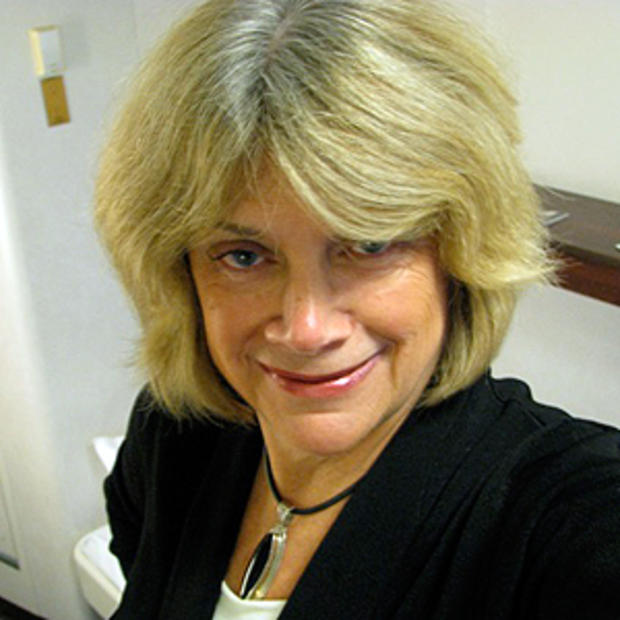Although I lived in Seattle for a number of years back in the early '70s, I never made it to the Frye Art Museum. Located on First Hill (aka Pill Hill), it somehow didn't make it to my list of rainy day spots. Even while attending Seattle University, less than a mile away from the museum, I never passed through its doors.
The Frye Art Museum opened in 1952 as the legacy of Charles and Emma Frye, prominent early-20th century Seattle business leaders and art collectors. Housed in a building designed by architect Paul Thiry, whose other Seattle projects include the Museum of History and Industry and St. Demetrios Greek Orthodox Church, its Terry Avenue location is within praying distance of St. James Cathedral.
One of the unusual aspects about the Frye is that it's free. In fact, the Travel Channel recently included it in its Top Ten Free U.S. Museums. It joins such renowned repositories as The Smithsonian Museums in Washington, DC; Cleveland Museum of Art; Getty Center in Los Angeles; and the Alamo in San Antonio, Texas.
The Travel Channel singled out the Frye for "carrying on the legacy of its founders and bringing free art to the larger Seattle community since 1952. In addition to the free exhibits at the museum visitors can participate in Art Talks with curators and educators, 1-hour interactive Guided Tours and the Magic Lantern series with screenings and talks on the art of film. For a real splurge, pay $5 for a Tuesday Tea and Tour event, which includes a guided stroll through the galleries followed by some discussion over tea and snacks."
Last month, four new summer exhibitions opened at the Frye: Ida Kay Greathouse: A Tribute; Northern Latitudes: The Frye and Alaska; On Arctic Ice: Fred Manchetanz; and Frye-Bruhn and Alaska. Mrs. Greathouse, director of the museum for 25 years, turns 105 this year. She became the director in 1966 following the death of her husband Walser Greathouse, who was the Frye's first director.
Her love of American art is evident in the exhibition, which includes William Harnett's A Wooden Basket of Catawba Grapes, along with works by Walter Kuhn, William Merritt Chase, Edward Hopper, John Singer Sargent, and N.C., Andrew and Jamie Wyeth. I found it somewhat amusing that the one piece by Thomas Moran, whose images of Yellowstone were instrumental in getting the U.S. Congress to establish the National Park System in 1916, was in fact an oil on canvas titled Venice. There are also a number of French paintings with Impressionist works by Berthe Morisot, Pierre-August Renoir, and Alfred Sisley, and early 20th century Russian pieces. But for the most part, the exhibition focuses on American art.
Northern Latitudes: The Frye and Alaska is a tribute to the special role that Alaska has played in the history of the Frye Art Museum. It features a selection of the museum's Alaskan acquisitions, the majority of which were made by Ida Kay Greathouse. In 1984, the museum opened the Alaska Wing, which eventually became known as the Greathouse Gallery.
Paintings by Jules Dahlager, Ted Lambert, Sydney Laurence, Fred Machetanz, and Eustace Ziegler are in the collection that includes depictions of the rugged wilderness of our 49th state. Jonathan Van Zyle, who has been the official artist of the Iditarod race since 1979, is represented with an acrylic on masonite titled Into the Flats. I thought the work seemed somewhat familiar, and recalled that Jonathan and his wife Jona had a show at Brackenwood Gallery in my hometown of Langley earlier this year.
On Arctic Ice: Fred Machetanz is an exhibition of the Midwest-born artist's stone lithographs that he produced between 1946-1980 depicting the landscape, wildlife, and people of Alaska. Machetanz and his family lived in the town of Palmer in Alaska's Matanuska Valley, northeast of Anchorage. Machetanz explained that his interest in lithography was a desire to capture the nuances of light and dark: "There is a feeling about a lithograph; you have to have an interesting and strong pattern of dark and light. When you put tones together right you get greys, that when contrasted with black and white, feel very rich."
Machetanz had his first solo show in 1962 at the Anchorage-Westward Hotel; he had one at the Frye in 1973. He painted his rugged and beloved Alaska until his death in 2002.
Frye-Bruhn and Alaska runs in conjunction with Northern Latitudes and On Arctic Ice, and it has reproductions of historical photographs that document the life of Charles Frye in both Seattle and Alaska. In 1891, Frye and his business partner, Charles Bruhn, established the Frye-Bruhn Meat Packing Company in Seattle. With the Klondike gold rush in the Yukon, they expanded into Alaska, establishing a retail outlet in Skagway in 1897.
They opened six more stores, selling groceries and meat to commercial outlets, prospectors and settlers. The original cold storage building in Skagway is now owned by the National Park Service and is in the process of being nominated to the National Register of Historic Places.
Another unique piece of Alaska history that's a fun addition to the exhibition is the 1918 Burton Holmes' film, A Day in Skaguay. Holmes was a traveler, photographer, and filmmaker, and coined the term travelogue to advertise his documentary travel lectures that included stories, slide show,s and films. The silent black and white film, which includes a Fourth of July parade and a dog-powered taxi service, premiered at the P.P.P. (Popular Picture Palace), one of two movie theaters in Skagway (the original name Skaguay was a Tlingit name that the U.S. government eventually changed to Skagway).
Frye Art Museum, 704 Terry Avenue, Seattle, WA 98104. Admission is free, parking is free. Closed Mondays. The Gallery Cafe serves food, espresso, and wine.


